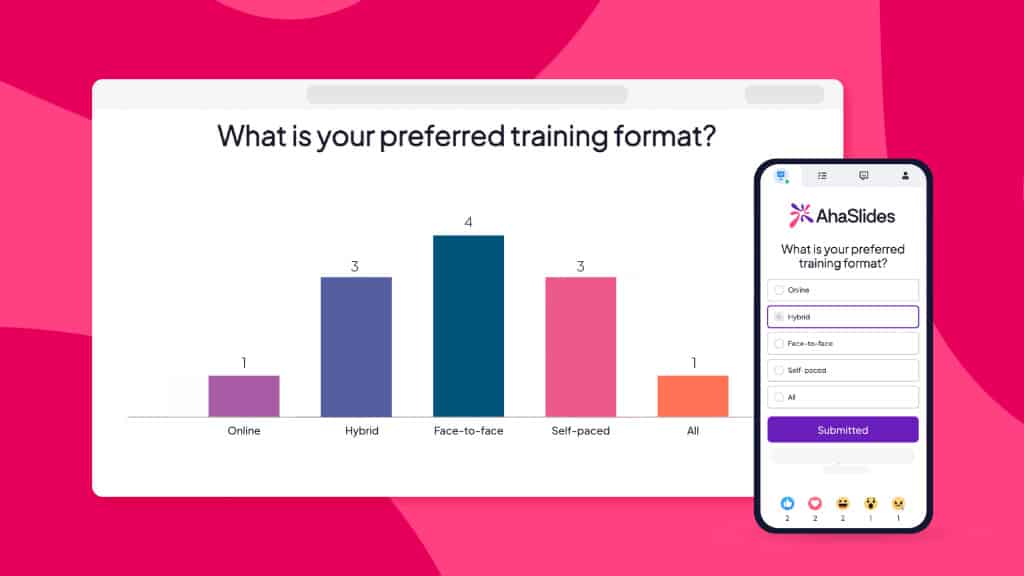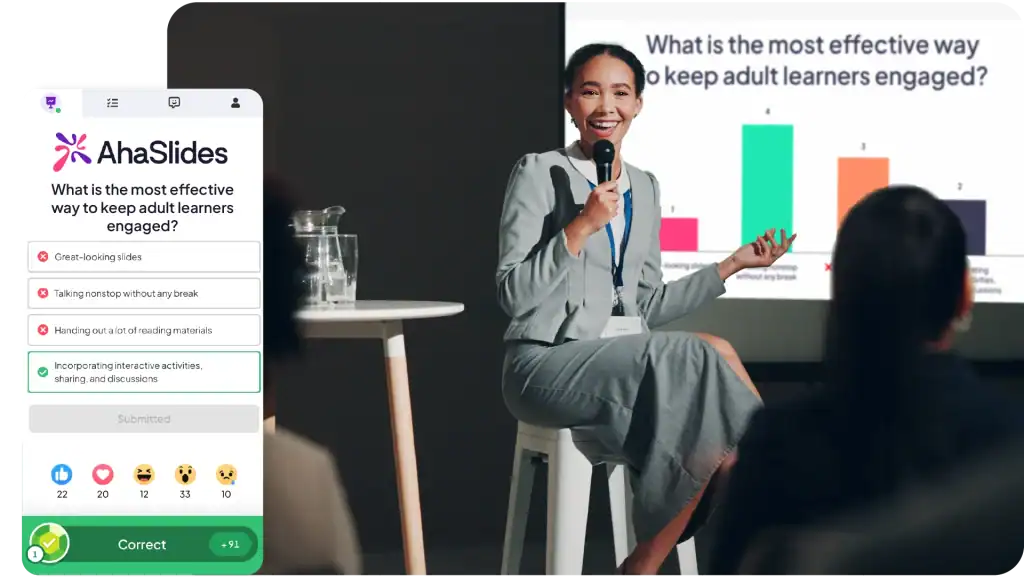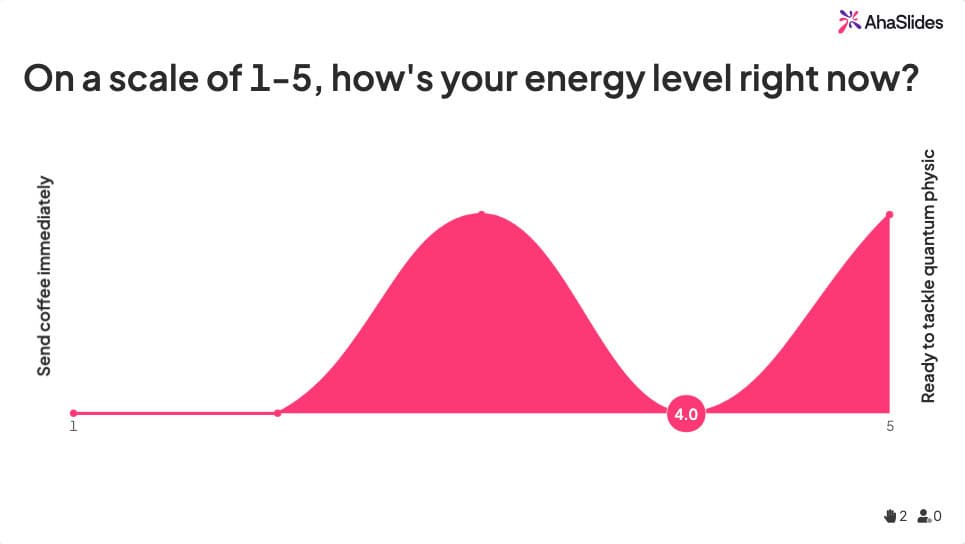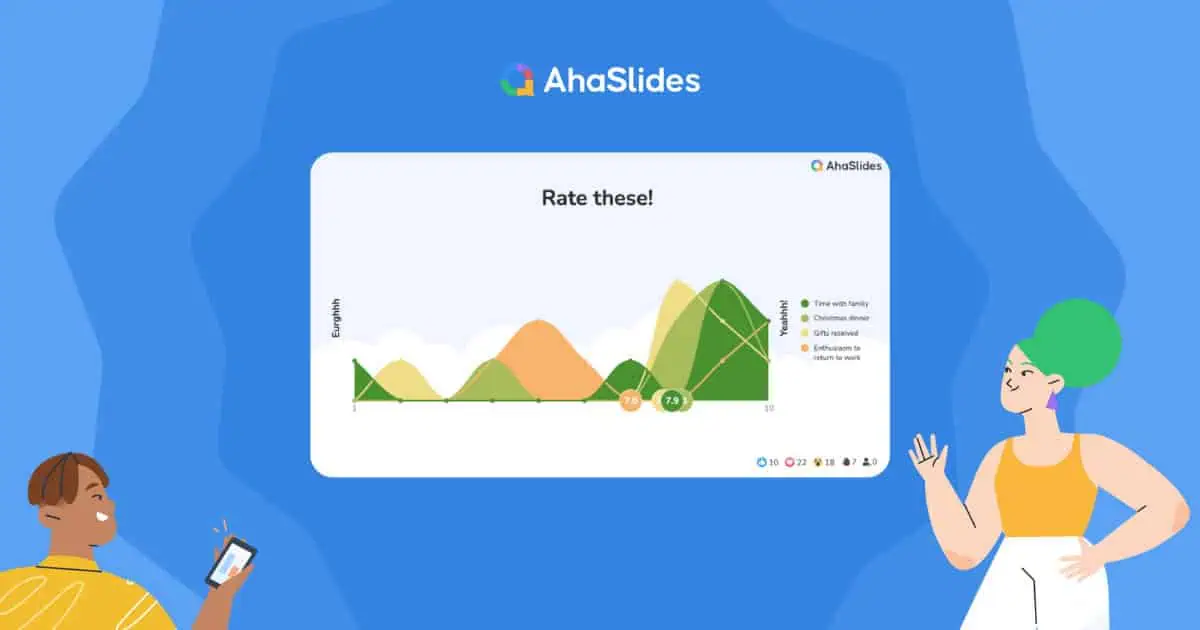Mūsdienu uzmanības ekonomikā, kurā trenējas TikTok, tev ir aptuveni 8 sekundes, lai piesaistītu kāda uzmanību — mazāk laika nekā zelta zivtiņai. Ja tas izklausās biedējoši 5 minūšu prezentācijai, lūk, labā ziņa: īsas prezentācijas ir tavs slepenais ierocis.
Kamēr citi maldās cauri 60 slaidu komplektiem, vērojot, kā acis aizmiglojas, jūs nogādāsiet koncentrētu vēstījumu, kas paliks atmiņā. Neatkarīgi no tā, vai jūs prezentējat savu piedāvājumu investoriem, apmācāt attālinātu komandu, prezentējat pētījumu rezultātus vai piedalāties intervijā savam sapņu amatam, 5 minūšu formāta apgūšana ir ne tikai ērta, bet arī karjeru noteicoša.
Šī rokasgrāmata balstās uz prezentāciju zinātni, profesionālu treneru, kuri katru gadu vada simtiem sesiju, atziņām un pārbaudītām TED runātāju metodēm, lai palīdzētu jums izveidot prezentācijas, kas piesaista, pārliecina un atstāj paliekošu iespaidu.
Saturs
Kāpēc 5 minūšu prezentācijām nepieciešama cita pieeja
Pētījumi Neirozinātnieka Džona Medinas pētījums liecina, ka tradicionālo prezentāciju laikā auditorijas uzmanība ievērojami samazinās ik pēc 10 minūtēm. Virtuālajā vidē šis logs sarūk līdz tikai 4 minūtēm. Jūsu 5 minūšu prezentācija lieliski iekļaujas šajā iesaistes optimālajā punktā, bet tikai tad, ja tā ir pareizi izstrādāta.
Īsu prezentāciju gadījumā likmes ir lielākas. Katrs vārds ir svarīgs. Katrs slaids ir svarīgs. Nav laika pildījumam, nav vietas novirzēm, un nav nekādas tolerances pret tehniskām kļūdām. Nozares pētījumi liecina, ka 67% profesionāļu tagad dod priekšroku kodolīgām, koncentrētām prezentācijām, nevis garām, tomēr lielākā daļa prezentētāju joprojām uztver īsas runas kā garu runu saīsinātas versijas, kas reti kad darbojas.
Kā izveidot 5 minūšu prezentāciju
1. solis: izvēlieties tēmu ar ķirurģisku precizitāti

Lielākā kļūda, ko pieļauj prezentētāji? Mēģinājums aptvert pārāk daudz tēmas. Jūsu 5 minūšu prezentācijai vajadzētu pievērsties viena galvenā ideja— ne trīs, pat ne divi. Iedomājieties to kā lāzeru, nevis prožektoru.
Jūsu tēmai jāiztur šis četrdaļīgais tests:
- Viens fokusa punkts: Vai vari to izskaidrot vienā teikumā? Ja nē, tad sašauriniet to.
- Atbilstība auditorijai: Vai tas atrisina problēmu, ar kuru viņi aktīvi saskaras? Izlaidiet informāciju, ko viņi jau zina.
- Vienkāršība: Vai vari to izskaidrot bez sarežģīta pamatojuma? Sarežģītas tēmas saglabā garākiem formātiem.
- Jūsu kompetence: Pieturieties pie tēmām, kuras jūs labi pārzināt. Sagatavošanās laiks ir ierobežots.
Iedvesmai apsveriet šīs pārbaudītās 5 minūšu tēmas dažādos kontekstos:
- Profesionālie iestatījumi: 3 uz datiem balstītas stratēģijas klientu aizplūšanas samazināšanai, Kā mākslīgā intelekta rīki pārveido mūsu darbplūsmu, Kāpēc mūsu 3. ceturkšņa rezultāti liecina par stratēģisku pavērsienu
- Apmācība un zināšanu pilnveidošana: Viens ieradums, kas pārveido attālinātās komandas sniegumu, Darbinieku iesaistes rādītāju pamatā esošā psiholoģija, Kā sniegt atgriezenisko saiti, kas faktiski uzlabo uzvedību
- Akadēmiskie konteksti: Galvenie secinājumi no mana ilgtspējības pētījuma: Kā sociālie mediji ietekmē pusaudžu lēmumu pieņemšanu, Gēnu rediģēšanas ētika trīs reālos scenārijos
2. solis: Izveidojiet slaidus, kas pastiprina (nevis novērš uzmanību)
Lūk, patiesība, kas atšķir amatierus no profesionāliem vadītājiem: Tu esi prezentācija, nevis tavi slaidi. Slaidiem ir jāatbalsta jūsu stāstījums, nevis tas jāaizstāj.
Jautājums par slaidu skaitu
Prezentāciju ekspertu pētījumi iesaka 5 minūšu runai izmantot 5–7 slaidus — aptuveni vienu slaidu minūtē, paredzot laiku ievadam un noslēgumam. Tomēr TED runātāji dažreiz izmanto 20 slaidus, kas ātri mainās (katrs 10–15 sekundes), lai saglabātu vizuālo impulsu. Svarīgāka par kvantitāti ir skaidrība un mērķis.
Satura dizaina principi
- Minimāls teksts: Maksimāli 6 vārdi katrā slaidā. Jūsu 700 vārdu garajam tekstam jābūt ierunātam, nevis parādītam.
- Vizuālā hierarhija: Izmantojiet izmēru, krāsu un atstarpi, lai pievērstu uzmanību vissvarīgākajam.
- Datu vizualizācija: Viens saistošs statistikas rādītājs vai grafiks katrā slaidā ir labāks par skaidrojuma rindkopām.
- Vienmērīgs dizains: Vienādi fonti, krāsas un izkārtojumi visā tekstā saglabā profesionalitāti.
Pro tip: Padariet savu prezentāciju interaktīvu, izmantojot tiešraides aptaujas, jautājumu un atbilžu funkcijas vai ātrās viktorīnas. Tas pārveido pasīvos skatītājus par aktīviem dalībniekiem un ievērojami uzlabo informācijas iegaumēšanu. Rīki, piemēram, AhaSlides ļauj nemanāmi iegult šīs funkcijas pat 5 minūšu formātos.

3. solis: apgūstiet laika pārvaldīšanu ar militāru precizitāti
5 minūšu prezentācijā katrai sekundei ir savs uzdevums. Nav laika pārdomām vai kļūdu labošanai. Profesionāli runātāji ievēro šo pārbaudīto struktūru:
Pārbaudīta laika sadales formula
- 0:00–0:30 – Atvēršanas āķis: Piesaistiet uzmanību ar pārsteidzošu faktu, provokatīvu jautājumu vai saistošu stāstu. Izlaidiet garus ievadus.
- 0:30–1:30 – Problēma: Noskaidrojiet, kāpēc jūsu auditorijai tas būtu svarīgi. Kādu izaicinājumu risina jūsu tēma?
- 1:30–4:30 — Jūsu risinājums/ieskats: Šis ir jūsu galvenais saturs. Sniedziet 2–3 galvenos punktus ar pamatojošiem pierādījumiem. Izmetiet visu nebūtisko.
- 4:30–5:00 — Secinājumi un aicinājums uz rīcību: Pastipriniet savu galveno vēstījumu un precīzi pastāstiet auditorijai, kas jādara tālāk.
Virtuālās prezentācijas pielāgošana
Vai prezentējat attālināti? Ik pēc 4 minūtēm iekļaujiet iesaistes brīžus (saskaņā ar Medina pētījumu). Izmantojiet aptaujas, pieprasiet atbildes tērzēšanā vai uzdodiet retoriskus jautājumus. Pārbaudiet kameras leņķi (acu līmenī), nodrošiniet spēcīgu apgaismojumu no priekšpuses un iepriekš pārbaudiet audio kvalitāti. Virtuālās auditorijas ir vairāk pakļautas uzmanības novēršanai, tāpēc mijiedarbība nav izvēles iespēja — tā ir būtiska.

4. solis: sniedziet informāciju ar patiesu pārliecību

Pat izcils saturs cieš neveiksmi sliktas piegādes dēļ. Lūk, kā profesionāļi uztver patiesības brīdi:
Praktizējieties tā, it kā no tā būtu atkarīga jūsu karjera (jo tā varētu būt)
Izmēģiniet savu 5 minūšu prezentāciju vismaz 5–7 reizes. Izmantojiet taimeri. Ierakstiet sevi un noskatieties to vēlreiz — tas ir sāpīgi, bet nenovērtējami. Praktizējieties, līdz varat dabiski prezentēt saturu, nelasot slaidus. Muskuļu atmiņa palīdz pārvarēt nervozitāti.
Piegādes metodes, kas atšķir amatierus no profesionāļiem
- Vokālā daudzveidība: Maini tempu, augstumu un skaļumu. Stratēģiski ieturi pauzes, lai uzsvērtu — klusumam ir spēks.
- Ķermeņa valoda: Klātienē izmantojiet atklātus žestus un kustieties mērķtiecīgi. Kameras priekšā ierobežojiet žestus (tie pastiprina) un saglabājiet acu kontaktu ar objektīvu.
- Stāsti: Iekļaujiet īsu, atbilstošu piemēru vai anekdoti. Stāsti palielina noturību 22 reizes, salīdzinot ar faktiem vien.
- Enerģijas pārvaldība: Pielāgojiet savu enerģiju savam vēstījumam. Entuziasms iedvesmai, savaldība nopietnu tēmu gadījumā.
- Tehniskā gatavība: Pārbaudiet aprīkojumu 30 minūtes iepriekš. Izveidojiet rezerves plānus savienojamības problēmu gadījumā.
Saziņas ar auditoriju noslēpums
Domājiet par savu prezentāciju kā par sarunu, nevis par priekšnesumu. Saglabājiet acu kontaktu (vai skatieties kamerā virtuālu prezentāciju gadījumā). Pieņemiet vērā reakcijas. Ja paklūpat, īsi apstājieties un turpiniet — auditorija piedod autentiskumu, bet ne robotisku slaidu lasīšanu.
Slepenais padoms: Nezināt, vai jūsu 5 minūšu prezentācija atstāj iespaidu? Izmantojiet atsauksmju rīks lai uzreiz savāktu auditorijas noskaņojumu. Tas prasa minimālu piepūli, un jūs nezaudējat vērtīgas atsauksmes.

5 izplatītas kļūdas, sniedzot 5 minūšu prezentāciju
Mēs pārvaram un pielāgojamies, izmantojot izmēģinājumus un kļūdas, taču ir vieglāk izvairīties no iesācēju kļūdām, ja zināt, kas tās ir👇
- Darbojas laika gaitā: Auditorija pamana. Tas liecina par sliktu sagatavošanos un nerespektē viņu grafiku. Trenējies, lai pabeigtu plkst. 4:45.
- Slaidu pārslodze: Ar tekstu bagāti slaidi liek auditorijai lasīt, nevis klausīties. Jūs acumirklī zaudējat viņu uzmanību.
- Lēkšanas prakse: "Tās ir tikai 5 minūtes" ir bīstama domāšana. Īsiem formātiem ir nepieciešams VAIRĀK prakses, nevis mazāk.
- Cenšos aptvert visu: Dziļums pārspēj platumu. Viena skaidra atziņa, kas rezonē, ir labāka nekā pieci punkti, ko neviens neatceras.
- Ignorējot savu auditoriju: Pielāgojiet saturu viņu interesēm, zināšanu līmenim un vajadzībām. Vispārīgas prezentācijas nekad neizdodas.
5 minūšu prezentāciju piemēri
Izpētiet šos piemērus, lai redzētu principus darbībā:
Viljams Kamkvamba: "Kā es izmantoju vēju"
šis TED Talk video piedāvā stāstu par Viljamu Kamkvambu, izgudrotāju no Malāvijas, kurš, būdams nabadzīgs bērns, uzcēla vējdzirnavas, lai sūknētu ūdeni un ražotu elektrību savam ciematam. Kamkvambas dabiskais un tiešais stāstījums spēja aizraut skatītājus, un viņa īsu paužu izmantošana, lai cilvēki pasmieties, ir arī vēl viens lielisks paņēmiens.
Sūzana V. Fiska: “Labpilnības nozīme”
šis apmācības video piedāvā noderīgus padomus zinātniekiem, kā strukturēt savu runu tā, lai tā atbilstu prezentācijas formātam “5 minūšu ātrais”, kas arī ir izskaidrots 5 minūtēs. Ja plānojat izveidot ātru prezentāciju “Pamācība”, skatiet šo piemēru.
Džonatans Bells: "Kā izveidot lielisku zīmola nosaukumu"
Kā jau liecina nosaukums, runātājs Džonatans Bells sniegs jums soli pa solim par to, kā izveidot ilgstošu zīmola nosaukumu. Viņš tieši nonāk pie lietas ar savu tēmu un pēc tam sadala to mazākos komponentos. Labs piemērs, no kā mācīties.
PACE rēķins: 5 minūšu piedāvājums Startupbootcamp
Šis video parāda, kā PACE rēķins, jaunuzņēmums, kas specializējas vairāku valūtu maksājumu apstrādē, spēja skaidri un kodolīgi iepazīstināt investorus ar savām idejām.
Vils Stīvens: "Kā izklausīties gudri jūsu TEDx sarunā"
Izmantojot humoristisku un radošu pieeju, Vila Stīvena TEDx runa palīdz cilvēkiem apgūt vispārējās publiskās runas prasmes. Obligāti jānoskatās, lai prezentācija kļūtu par šedevru.
Vai esat gatavs veidot prezentācijas, kas patiesi piesaista uzmanību? Sāciet ar AhaSlides interaktīvajiem prezentāciju rīkiem un pārveidojiet savu nākamo 5 minūšu prezentāciju no aizmirstamas par neaizmirstamu.








